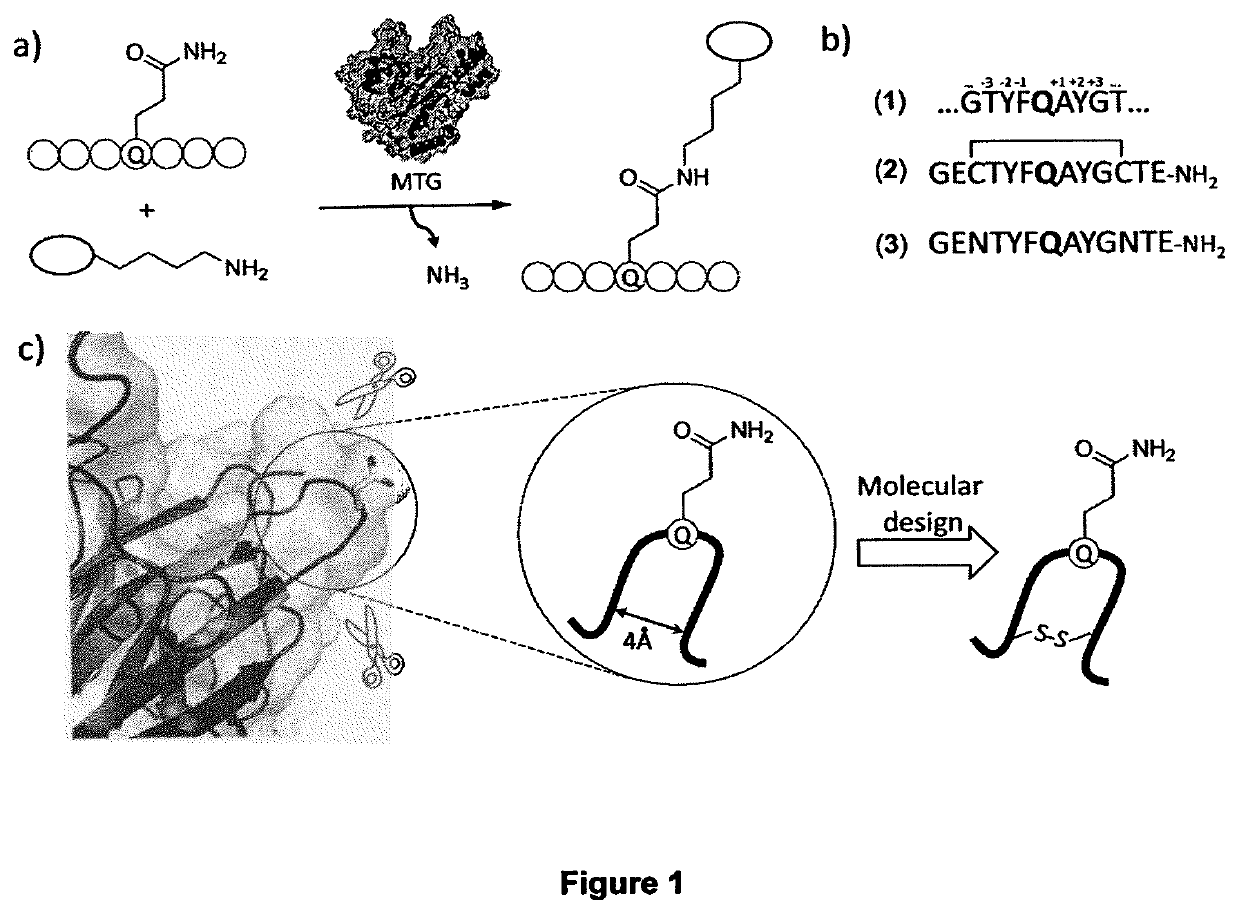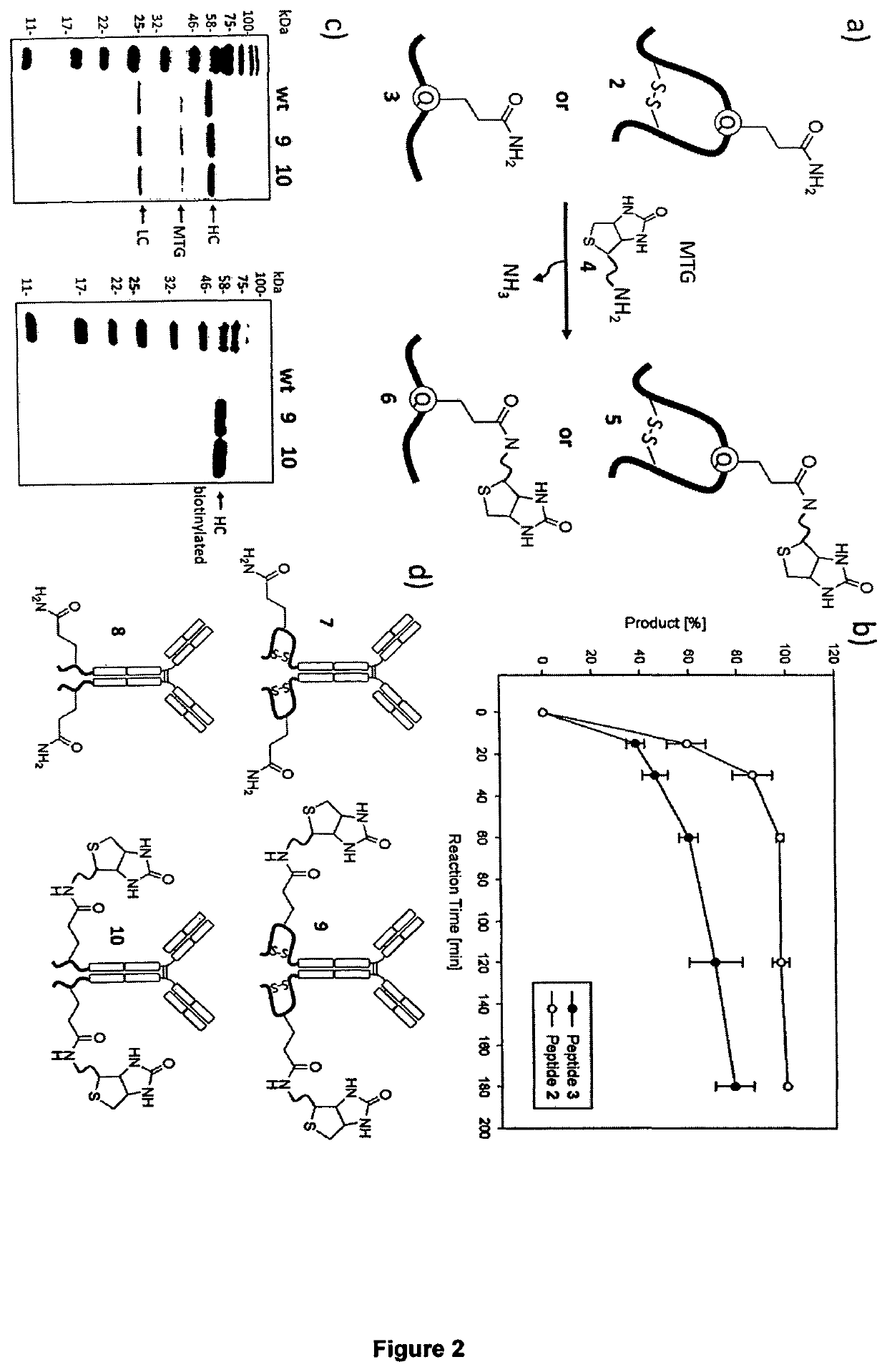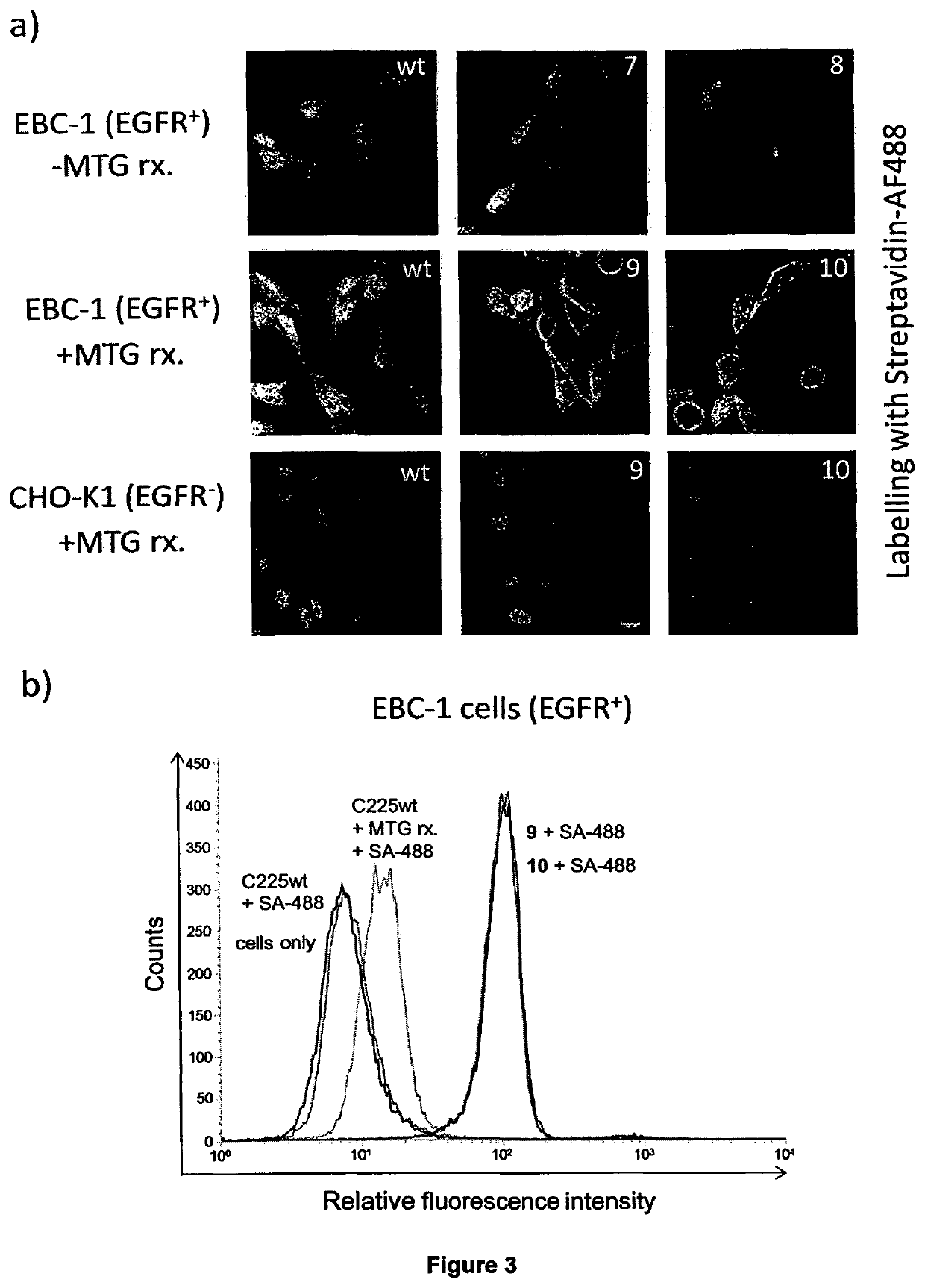Transglutamine tag for efficient site-specific bioconjugation
a bioconjugation and site-specific technology, applied in the field of bioconjugation, can solve the problems of high concentration of the enzyme required to catalyze the transpeptidase reaction, difficulty in preparation of protein bioconjugates, and heterogeneous mixtures, and achieve the effect of efficient us
- Summary
- Abstract
- Description
- Claims
- Application Information
AI Technical Summary
Benefits of technology
Problems solved by technology
Method used
Image
Examples
example 1
[0177]Solid-Phase Synthesis of Peptides and Purification
[0178]Peptides were synthesized on an AmphiSpheres 40 RAM resin (Agilent, 0.27 mmol / g) by microwave-assisted Fmoc-SPPS using a Liberty Blue™ Microwave Peptide Synthesizer at a 0.1 mmol scale. Activation of the respective carboxyfunctional amino acid was performed by Oxyma / N,N′-Diisopropylcarbodiimide (DIC). Deprotection of the aminoterminal Fmoc-group was achieved using 20% piperidine in DMF in the presence of Oxyma. During the synthesis cycles all amino acids were heated to 90° C. (cysteines to 50° C.). Peptides were cleaved from the resin by a standard cleavage cocktail of 94% TFA, 2% triethylsilane, 2% anisole, 2% H2O. Cysteine containing peptides were cleaved in the presence of dithiothreitol (DTT) to suppress unwanted oxidation of cysteines. After 2 h of cleavage, peptides were precipitated in cold diethylether and washed twice with diethylether. The disulfide-bridged crude peptide was oxidized at 1 mg ml-1 in 100 mM (NH4)...
example 2
[0183]Peptide Biotinylation Assays.
[0184]Peptides were dissolved at 50 mg / ml in DMSO and diluted to 1.25 mg / ml in 100 mM HEPES pH 7.0 for enzymatic conjugation. Monobiotinyl cadaverine was added at a 5 fold molar excess over peptide and enzymatic reactions initiated by addition of microbial transglutaminase at an enzyme / substrate ratio of 1 / 50 (w / w). For peptide biotinylation assays involving peptide 2 (SEQ ID NO: 90) and reference peptide GGGSLLQG (SEQ ID NO:295), the amount of microbial transglutaminase was reduced to an enzyme / substrate ratio of 1 / 385 and 1 / 182 (w / w), respectively. Reactions were incubated at 37° C. Aliquots of the reaction mixture were collected after 0, 15, 30, 60, 120, and 180 min and reactions stopped by transglutaminase removal using centrifugation dialysis (Microcon-10, 10.000 NMWL, Merck Millipore). Aliquots were analyzed by RP-HPLC by using a gradient from 10 to 80% eluent B (90% aq. MeCN) over 20 min at 1 ml / min (see FIG. 4). Fractions collected from the...
example 3
[0185]Enzymatic Antibody Conjugation using Transglutaminase.
[0186]Antibody expression and purification. Plasmids coding for cetuximab (Erbitux®) wildtype were kindly provided by Merck Serono (Darmstadt). Cetuximab mutants containing the TG-tags at the C-terminus of the heavy chain were prepared by standard SOE PCR techniques as described below. The C-terminal lysine was omitted in both constructs to avoid cross-reactivity of the c-amino group with transglutaminase-accessible glutamines. Antibodies were transiently expressed from HEK293F cells using the Expi293 Expression System (Life Technologies). Conditioned supernatants were applied to spin columns with PROSEP-A Media (Montage, Merck Millipore) and washed with 1.5 M Glycine / NaOH, 3 M NaCl, pH 9.0. Proteins were eluted with 0.2 M Glycine / HCl pH 2.5 and neutralized with 1M Tris / HCl pH 9.0. Eluted proteins were dialyzed in 1×DPBS (Life Technologies) and stored at 4° C.
[0187]PCR-based generation of tagged Cetuximab (lacking the termi...
PUM
| Property | Measurement | Unit |
|---|---|---|
| molecular weight | aaaaa | aaaaa |
| diameter | aaaaa | aaaaa |
| diameter | aaaaa | aaaaa |
Abstract
Description
Claims
Application Information
 Login to View More
Login to View More - R&D
- Intellectual Property
- Life Sciences
- Materials
- Tech Scout
- Unparalleled Data Quality
- Higher Quality Content
- 60% Fewer Hallucinations
Browse by: Latest US Patents, China's latest patents, Technical Efficacy Thesaurus, Application Domain, Technology Topic, Popular Technical Reports.
© 2025 PatSnap. All rights reserved.Legal|Privacy policy|Modern Slavery Act Transparency Statement|Sitemap|About US| Contact US: help@patsnap.com



